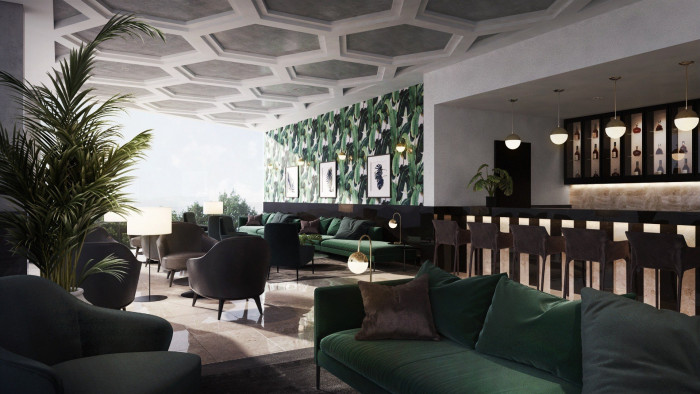As the world evolves, so does the art of creating spaces. Architecture and interior design are two closely interwoven disciplines that hold immense power in shaping our surroundings. The seamless integration of these fields results in breathtaking spaces that marry functionality with aesthetics, creating environments that are not just visually appealing but also purposeful in their design.
Architecture sets the framework for a space, dictating its form, structure, and overall layout. It takes into account various factors such as the surrounding environment, cultural context, and intended use of the space. The architectural design determines the bones of the structure, determining how it interacts with its surroundings and how it serves its purpose.
Once the architectural foundation is laid, interior design steps in to breathe life into the space. Interior designers work their magic, carefully selecting elements that complement the architectural design while fulfilling the needs and desires of the occupants. They focus on the finer details of a space, such as furniture, lighting, color schemes, and decorative accents, all of which contribute to the overall ambiance and functionality.
The harmonious blend of architecture and interior design is a delicate dance, where every line, every curve, and every brushstroke work in unison to create a cohesive and visually stunning experience. The careful interplay between form and function, aesthetics and practicality, is what sets exceptional spaces apart. In the realm of architecture and interior design, collaboration and synergy lead to transformative environments that engage, inspire, and uplift the human spirit.
Join us as we embark on a journey to explore the fascinating world where architecture and interior design merge, discovering the transformative power they hold in shaping our built environment. Through captivating stories, awe-inspiring examples, and expert insights, we will delve into the intricacies of this harmonious blend, uncovering the secrets behind creating spaces that not only captivate our senses but also enrich our lives. Let us embark on this exploration together, celebrating the genius collaboration of architecture and interior design.
The Role of Architecture in Shaping Spaces
Architecture plays a vital role in shaping the spaces we inhabit, integrating functionality, aesthetics, and the unique needs of individuals and communities. It is the art and science of designing and constructing buildings that not only provide shelter but also embrace the beauty of the surrounding environment. By thoughtfully considering factors such as site orientation, natural light, and the overall flow of spaces, architects create structures that harmoniously blend into their surroundings.
One of the fundamental aspects of architecture is its ability to transform a mere building into a place that evokes emotions and enhances human experiences. Through the use of innovative design techniques, architects can manipulate the spatial qualities of a structure, creating a sense of openness, intimacy, or grandeur as required. By carefully selecting materials and incorporating elements such as windows, arches, and skylights, architects can engage with natural light, allowing it to permeate spaces and create a connection between the built and natural environment.
In addition to aesthetics, architecture also considers the practical functionality of spaces. It takes into account the needs of the occupants and the purpose of the structure. Whether it is a residential home, office building, or public space, architecture aims to optimize the layout and arrangement of rooms, ensuring efficiency, comfort, and accessibility. By analyzing traffic flow, considering privacy requirements, and incorporating technology into the design, architects create spaces that serve their intended purposes effectively while providing a pleasant experience for the users.
Ultimately, architecture goes beyond the physicality of structures. It has the power to inspire, influence, and shape the way we interact with our surroundings. With careful consideration of context, history, and cultural significance, architects have the ability to create iconic landmarks that become emblematic of a city or region. Their vision and expertise contribute to the ongoing evolution of our built environment, continuously pushing boundaries and imagining new possibilities for the spaces we inhabit.
The Power of Interior Design in Enhancing Spaces
Interior design has the remarkable ability to transform spaces, creating an atmosphere that is not only visually pleasing but also functional and captivating. With its harmonious blend of creativity and practicality, interior design breathes life into the architectural framework, adding richness and depth to every corner. By carefully selecting colors, materials, and furniture, interior designers create spaces that not only serve their purpose but also evoke emotions and leave a lasting impression.
One of the key strengths of interior design is its ability to enhance the functionality of a space. Through clever arrangement and thoughtful placement of furniture and fixtures, designers optimize the flow and functionality of a room. They take into account the purpose of the space, the activities that will take place within it, and the needs of the people who will inhabit it. By creating a harmonious balance between form and function, interior design ensures that spaces not only look beautiful but also serve their intended purpose effectively.
Another aspect in which interior design displays its power is the creation of ambiance and atmosphere. By skillfully combining colors, textures, and lighting, designers are able to set the tone and mood of a space. Whether it’s the warm and inviting ambiance of a living room or the serene and tranquil atmosphere of a spa, interior design has the ability to evoke specific emotions and create unforgettable experiences. The artistry behind interior design lies in the careful selection of elements that work in harmony to create a desired ambiance, leaving a lasting impression on anyone who enters the space.
Furthermore, interior design plays a crucial role in the overall aesthetic appeal of a building. It has the power to transform a plain, lifeless structure into a visually stunning masterpiece. By carefully selecting materials, finishes, and decorative elements, designers add layers of interest and beauty, elevating the architectural design to new heights. The synergy between architecture and interior design is undeniable, with each discipline enhancing the other to create spaces that are not only aesthetically pleasing but also functional and captivating.
In conclusion, interior design is a powerful tool that enhances spaces in numerous ways. Its ability to optimize functionality, create ambiance, and enhance aesthetic appeal contributes to the overall experience and enjoyment of a space. By carefully combining creativity, practicality, and attention to detail, interior designers breathe life into architectural frameworks, delivering harmonious spaces that leave a lasting impact on those who enter them.
Achieving Harmony through Collaboration

Collaboration between architects and interior designers is essential to achieve a harmonious blend of architecture and interior design. It allows for a seamless integration of structural elements and spatial planning with aesthetic choices and functional requirements.
When architects and interior designers work together, they bring their unique expertise to the table. Architects focus on the overall design concept, considering factors such as building codes, structural integrity, and the surrounding environment. On the other hand, interior designers specialize in creating inviting and functional spaces, paying attention to details like furniture placement, color schemes, and lighting design.
By collaborating closely, architects and interior designers can ensure that their respective visions align. They can discuss ideas, exchange feedback, and make informed decisions that benefit the overall design. This collaborative process helps in avoiding conflicts and ensures that all aspects of the project work together cohesively.
Moreover, collaboration fosters innovation and creativity. It encourages the exploration of new ideas and approaches, leading to unique and groundbreaking designs. Architects and interior designers can pool their knowledge and skills to create spaces that are not only visually appealing but also practical and functional for the end-users.
In conclusion, achieving harmony through collaboration between architects and interior designers is crucial for the successful integration of architecture and interior design. By working together, these professionals can combine their expertise, ensure coherence, and create exceptional spaces that cater to both aesthetic and functional requirements.

